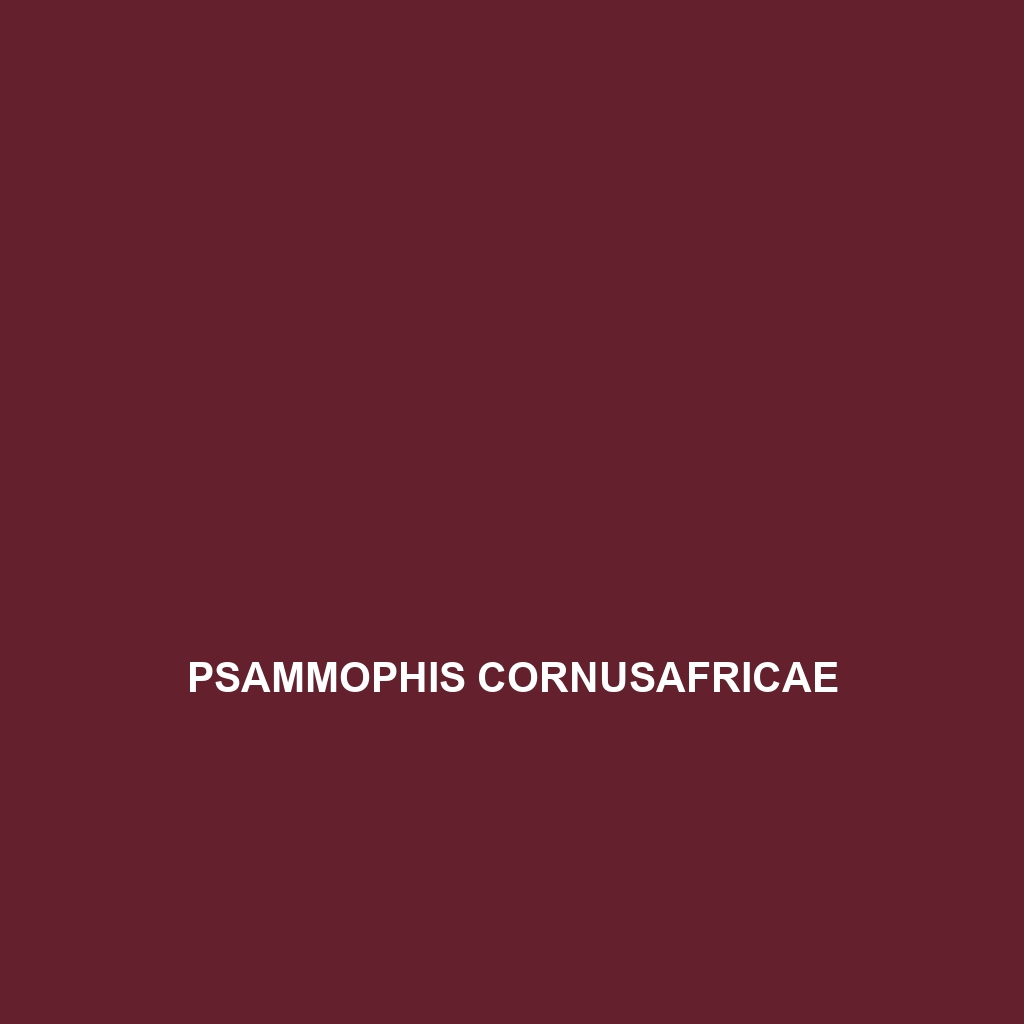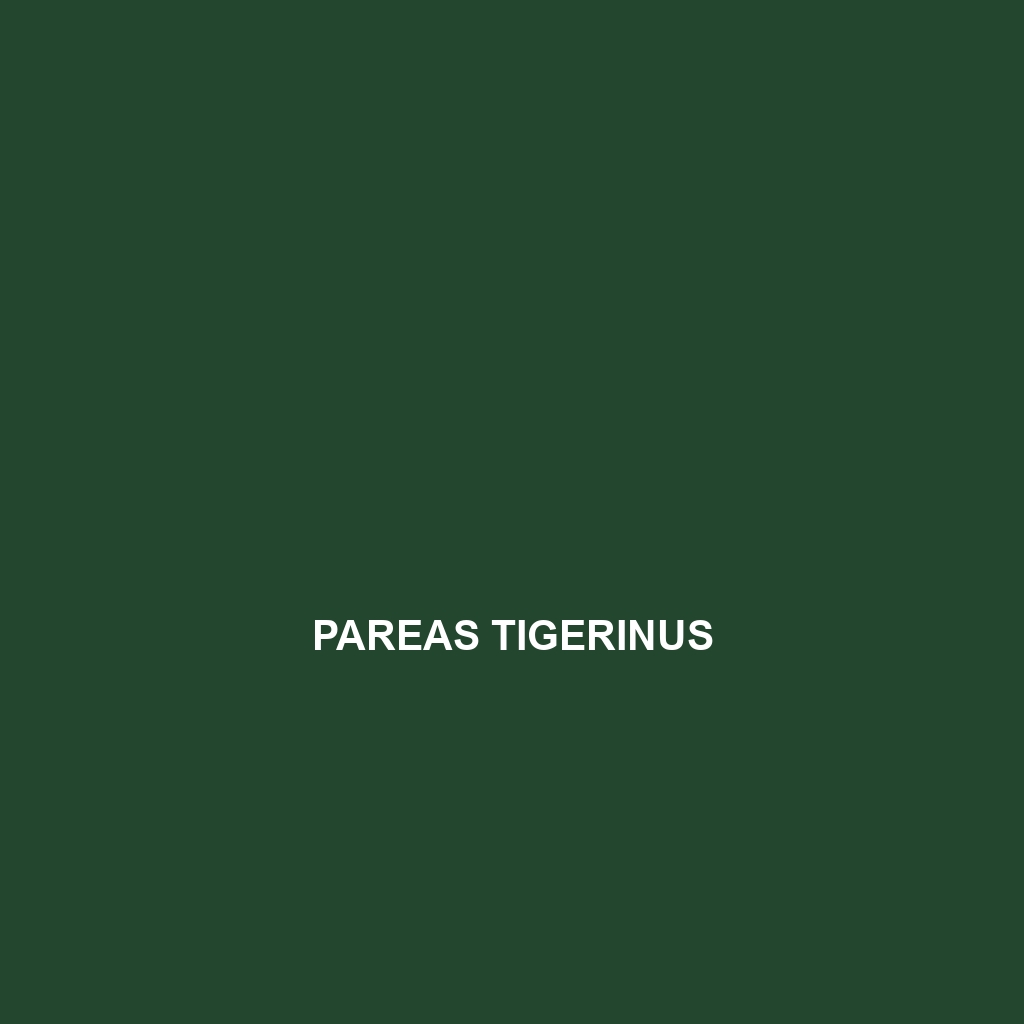<strong>Python brongersmai</strong>, known as the Borneo short-tailed python, is a robust, nocturnal snake native to the tropical rainforests of Southeast Asia, typically measuring 6 to 10 feet in length and featuring a unique pattern that provides excellent camouflage. This carnivorous species plays a vital role in its ecosystem by controlling populations of small mammals and birds while facing challenges from habitat loss and illegal wildlife trade.
Tag: snake enthusiasts
Ptyas luzonensis
<p><b>Ptyas luzonensis</b>, commonly known as the Luzon rat snake, is a medium-sized, agile snake found in various habitats across the Philippines, particularly on Luzon island. With its striking coloration and role as a predator of small mammals, it contributes significantly to the ecosystem while facing threats from habitat loss.</p>
Psammophis cornusafricae
<b>African Sand Snake (Psammophis cornusafricae)</b> is a slender, diurnal snake native to sub-Saharan Africa, thriving in sandy savannas and open grasslands. With a length of 60 to 90 centimeters, it features smooth, camouflaging scales and exhibits fascinating hunting behaviors, primarily feeding on small rodents, lizards, and insects.
Porthidium yucatanicum
<p><b>Porthidium yucatanicum</b>, known as the Yucatán pigmy rattlesnake, is a small to medium-sized rattlesnake found in tropical and subtropical regions of Central America. With its unique nocturnal behavior, robust body, and less pronounced rattle, it plays a crucial role in regulating prey populations while thriving in diverse habitats like rainforests and savannas.</p>
Python brongersmai
<strong>Python brongersmai</strong>, known as the Borneo short-tailed python, is a robust, nocturnal snake native to the tropical rainforests of Southeast Asia, typically measuring 6 to 10 feet in length and featuring a unique pattern that provides excellent camouflage. This carnivorous species plays a vital role in its ecosystem by controlling populations of small mammals and birds while facing challenges from habitat loss and illegal wildlife trade.
Ptyas luzonensis
<p><b>Ptyas luzonensis</b>, commonly known as the Luzon rat snake, is a medium-sized, agile snake found in various habitats across the Philippines, particularly on Luzon island. With its striking coloration and role as a predator of small mammals, it contributes significantly to the ecosystem while facing threats from habitat loss.</p>
Psammophis cornusafricae
<b>African Sand Snake (Psammophis cornusafricae)</b> is a slender, diurnal snake native to sub-Saharan Africa, thriving in sandy savannas and open grasslands. With a length of 60 to 90 centimeters, it features smooth, camouflaging scales and exhibits fascinating hunting behaviors, primarily feeding on small rodents, lizards, and insects.
Porthidium yucatanicum
<p><b>Porthidium yucatanicum</b>, known as the Yucatán pigmy rattlesnake, is a small to medium-sized rattlesnake found in tropical and subtropical regions of Central America. With its unique nocturnal behavior, robust body, and less pronounced rattle, it plays a crucial role in regulating prey populations while thriving in diverse habitats like rainforests and savannas.</p>
Platyceps thomasi
Discover the Platyceps thomasi, or Thomas's Rat Snake, a striking serpent native to the scrublands and savannas of eastern and southern Africa. This arboreal and predominantly nocturnal species, reaching lengths of 1.5 to 2 meters, features a slender body with a distinctive dorsal pattern of brown or gray scales, making it an adept hunter of small mammals and birds while playing a crucial role in its ecosystem.
Pareas temporalis
Discover the Indus Wolf Snake (<i>Pareas temporalis</i>), a nocturnal predator native to the humid rainforests of South and Southeast Asia, recognized for its distinctive dark brown and cream stripes, slender body, and vital role in maintaining ecological balance by controlling small animal populations. This moderately sized snake thrives in warm, tropical climates, primarily feeding on small rodents, lizards, and amphibians.









